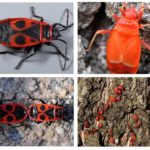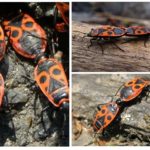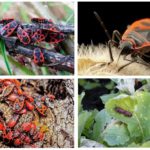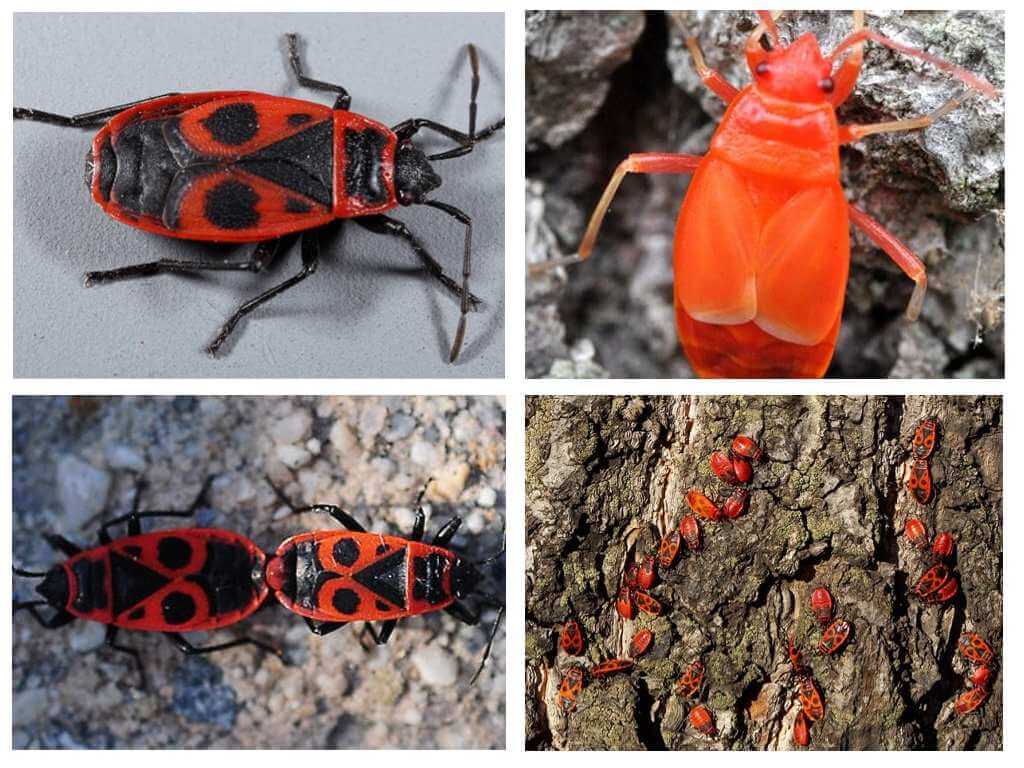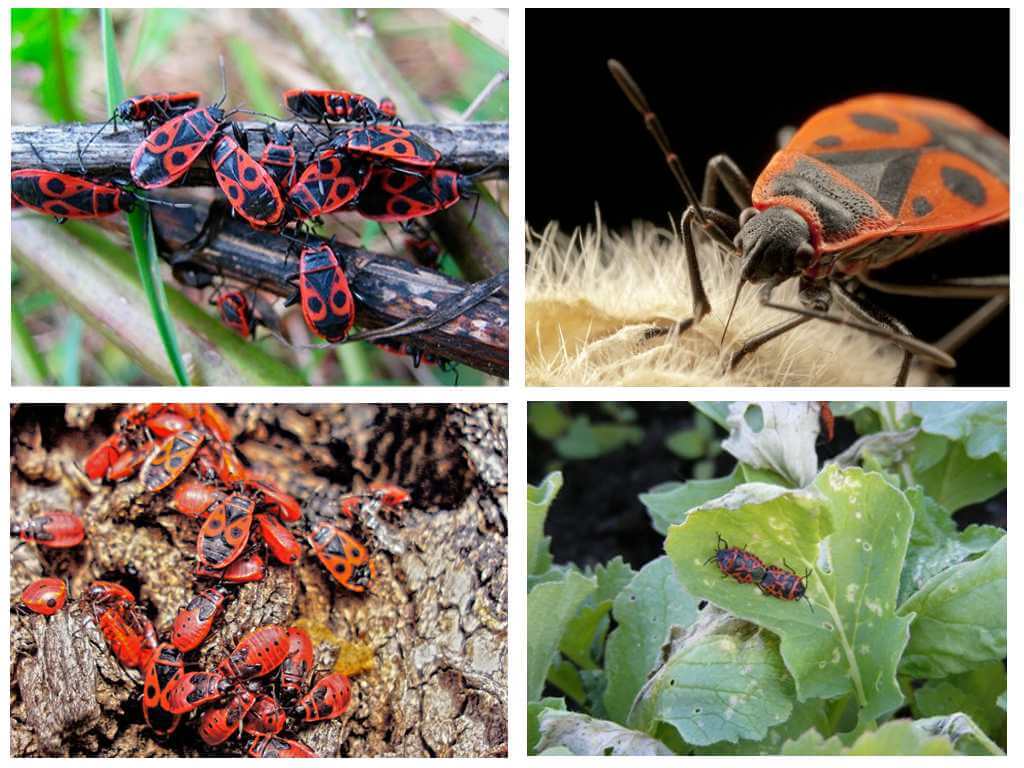The bug of the soldier (Red wingless wingless)
- Soldiers
- Pairing soldiers
- Harm from soldiers
- Preparations from the soldiers
For many of us, the bug of the soldier has been known since childhood. This small size and bright color of the insect can often be found on the plot. In nature, there are about 40 thousand species of bedbugs, but not all can boast of the original coloring. Most people, admiring the colorful ornament on the back of the cozatik, are not even aware of the extent of the damage that it can do to the owners of garden land. This article will tell you about the danger of soldiers' bugs and how to deal with them.
Insect description
The forerunner of heat and spring lives mainly in Eurasia. For him favorable temperate European continent. The insect is popularly called a bug by the soldier because it is one of the first to be born after long frosty days. Pyrrhocoris Apterus, a red bug, ground bug, or a firefighter bug - this is the name for a representative of the order of a half-winged bug soldier. This name was also received from the fact that they prefer to form whole colonies consisting of adult individuals and young offspring.
Interesting!
The bug has a slightly flattened body, painted in red and black tones. In length, it can reach up to 12 mm. The pronounced type of coloring of the red wing flock is its main distinguishing feature. Due to the absence of wings the pest cannot fly.
The soldier bug's mouth is a piercing-sucking proboscis, which is horizontal in a calm state. This organ is used by insects to puncture the plant membrane and suck up the cell sap of plants - this is what the soldiers eat bug. Durable mouth-proboscis is able to pierce the chitinous shell of a dead insect in order to get enough of the remaining liquid in it.In the absence of berries, fruits or vegetables, soldiers even eat dead vertebrates, gathering in groups on their dead bodies.
After reading the description of the soldier, many can easily remember the image of this pest. Below you can see what the bug looks like in the photo.
Breeding
Reproduction of this species of insects is very intense. Therefore, if you discover even a couple of bedbugs on your site, you should sound the alarm. After all, a mass invasion is inevitable. The process of mating pests is very unusual: the seed cells of the male fall into the abdomen of the female, when the partners press against each other with the back parts of the torso. As a result, there may be a feeling that they are measured by forces, trying to drag each other to their side.
In one egg-laying can contain up to 3 dozen eggs. Pearl white colored eggs, shaped like rice grains. Bedbugs try to lay them on the very plants that serve as a food source. However, egg-laying can also be seen on a dried-up tree, a rotting stump, a wooden structure, or on an old fence.
After 10 days, tiny larvae of soldiers appear from the eggs.They are distinguished from an adult individual not only by a smaller size. The chitinous cover of the larvae does not have a brightly colorful ornament, like that of older relatives, mainly it is of red shades with subtle black patches. It is by these features that the species of the red bug bug is easily determined.
Food for the larvae of the bug soldier serves the juice of young shoots. This preference is explained by the still weak short proboscis, which is not capable of piercing the already strong stalks of the plants. Very often the newly-born offspring can be found on the birch, the juice of which is a favorite delicacy.
Insects spend the winter in hibernation, pre-selecting a place for wintering. The main thing is that it is warm and dry. Usually pests hide in the crevices of wooden buildings or bark. With the arrival of warm days, they crawl out to bask in the sun. It is at such times that the habitats of insects can be determined.
What harm does an insect do?
Previously, the bug of the soldier was not counted as a harmful insect. But over time, the behavior of these representatives of nature began to change: they began to attack other insects.The soldier began to bring harm to a man when he began to destroy the crops of orchards and gardens.
After all, for the full existence of insects necessary sap plants, which is their food. As a result of the massive attacks of pests, the plants cease to bear fruit, begin to wilt, and later may even die. The fruits suffer from the invasion of hemiptera, having lost their appearance and become unsuitable for food. Vineyards are particularly dangerous, as harmful insects damage not only the plant stems, but also the fruits themselves. Therefore, it will not be superfluous to know how to get rid of bugs.
On a note!
The human health bug bugle is not dangerous. Therefore, do not panic, if by chance an uninvited guest was in your apartment. To get rid of the pest in the house is quite simple: you just need to take it outside.
Ways to fight
Before you start fighting with a soldier, you need to make sure that the dacha is infected with this pest. After all, the destruction of other types of insects may require completely different methods of struggle.
The presence of the soldier larvae on the plant can be seen by the following symptoms:
- on cultivated plants, buds and flowers fall off almost immediately after their appearance;
- the presence of yellow spots on cabbage leaves is another evidence of infection by red bugs;
- umbrella type plants (dill or coriander) dry too quickly;
- affected young shoots of carrots or beets can lag behind in development, and the leaves undergo twisting and drying.
In order not to feel the harm of a soldier in his garden, it is necessary to promptly withdraw the entire population, even if the effects of the damage on plants have not yet been found.
- To prevent red bugs from horticultural crops, they are best planted at some distance from alfalfa and perennial legumes. So how exactly these plants are used for insect dwelling in the cold season. With the advent of new shoots, the pests will certainly move to them.
- To prevent the spread of soldiers, weeds and alfalfa are mowed as low as possible, after which they are burned. This makes it possible to destroy as much as possible the egg-laying bugs placed on them.
- Before planting new crops in the waste ground, it is necessary to rid the territory of such weeds as wormwood, quinoa or shchiritsa, exposing them to burning.
- Derive red bugs can and folk remedies. To do this, use the onion peel, a decoction of which is sprayed infected plants. With the same purpose, use wood ash, a solution of mustard or soap (bar of soap on a bucket of water).
- Get rid of the garden of hemiptera will help chemicals. One of these is Bankol - a completely safe means for humans. To prepare a solution, dilute 7 ml of insecticide in 10 l of water and treat infected cultures with a sprayer.
- To get rid of the bugs of firefighters can also Karbofos and Aktar. Toxic chemicals are diluted in accordance with the doses indicated in the instructions and the plants are treated with them. Insecticides have a neuroparalytic effect, which leads to paralysis, and subsequently to the death of pests.
- A more benign method of dealing with bedbugs is the landing of a cimicifuge (a plant of the buttercup family) or a black cohosh.The smell of these plants does not like insects, with the result that they are in a hurry to leave the garden.
- Some gardeners, not wanting to use chemicals, try to remove the bugs mechanically, collecting them from plants by hand. But such a laborious process takes time and patience.
Do not underestimate the danger of a red bug. Excessive quantities of hemiptera are capable of causing significant damage to horticultural plants. In addition, it is necessary to take into account the fact that not only adult individuals are dangerous for plants, but also their larvae. Therefore, only the timely struggle with the pest will help enjoy the harvest.

